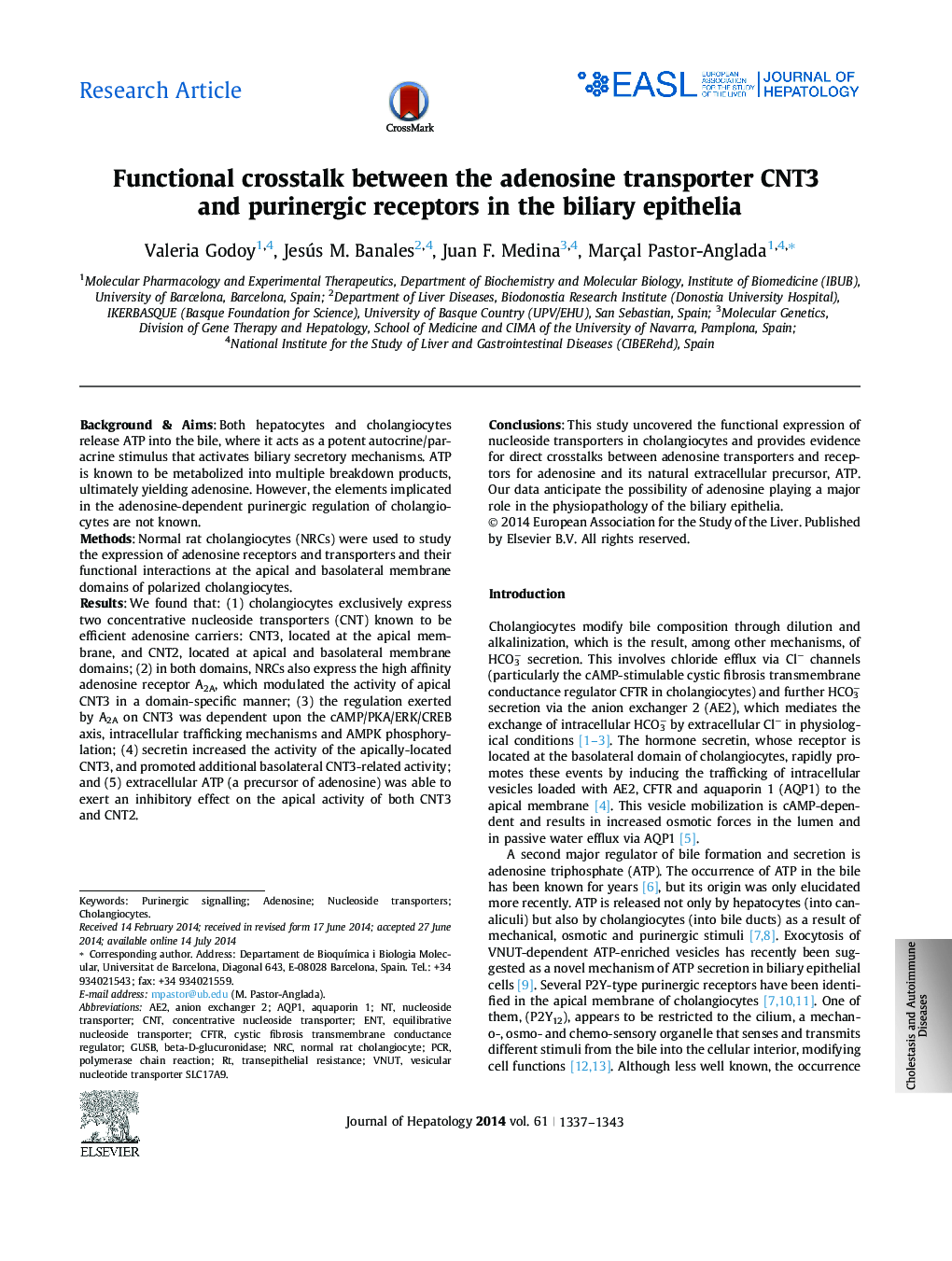| Article ID | Journal | Published Year | Pages | File Type |
|---|---|---|---|---|
| 6102365 | Journal of Hepatology | 2014 | 7 Pages |
Background & AimsBoth hepatocytes and cholangiocytes release ATP into the bile, where it acts as a potent autocrine/paracrine stimulus that activates biliary secretory mechanisms. ATP is known to be metabolized into multiple breakdown products, ultimately yielding adenosine. However, the elements implicated in the adenosine-dependent purinergic regulation of cholangiocytes are not known.MethodsNormal rat cholangiocytes (NRCs) were used to study the expression of adenosine receptors and transporters and their functional interactions at the apical and basolateral membrane domains of polarized cholangiocytes.ResultsWe found that: (1) cholangiocytes exclusively express two concentrative nucleoside transporters (CNT) known to be efficient adenosine carriers: CNT3, located at the apical membrane, and CNT2, located at apical and basolateral membrane domains; (2) in both domains, NRCs also express the high affinity adenosine receptor A2A, which modulated the activity of apical CNT3 in a domain-specific manner; (3) the regulation exerted by A2A on CNT3 was dependent upon the cAMP/PKA/ERK/CREB axis, intracellular trafficking mechanisms and AMPK phosphorylation; (4) secretin increased the activity of the apically-located CNT3, and promoted additional basolateral CNT3-related activity; and (5) extracellular ATP (a precursor of adenosine) was able to exert an inhibitory effect on the apical activity of both CNT3 and CNT2.ConclusionsThis study uncovered the functional expression of nucleoside transporters in cholangiocytes and provides evidence for direct crosstalks between adenosine transporters and receptors for adenosine and its natural extracellular precursor, ATP. Our data anticipate the possibility of adenosine playing a major role in the physiopathology of the biliary epithelia.
